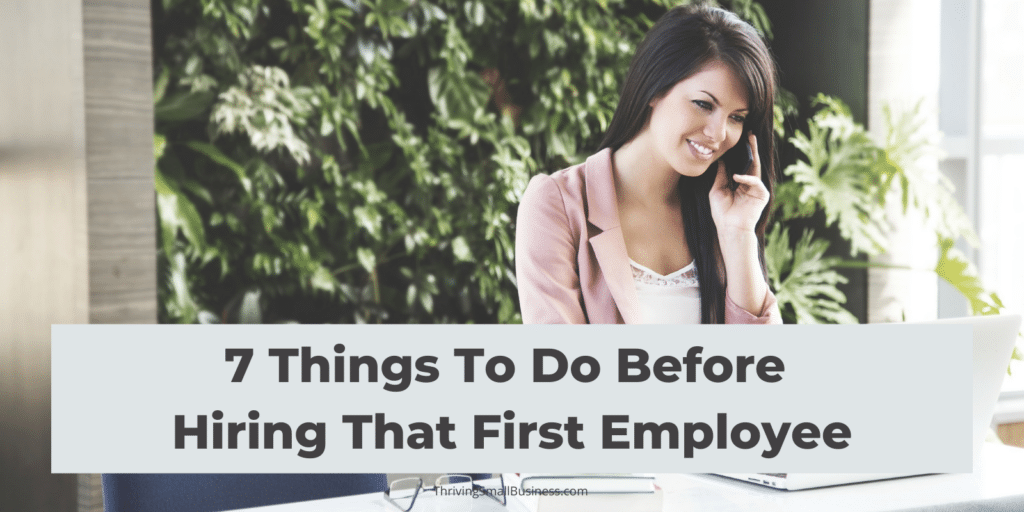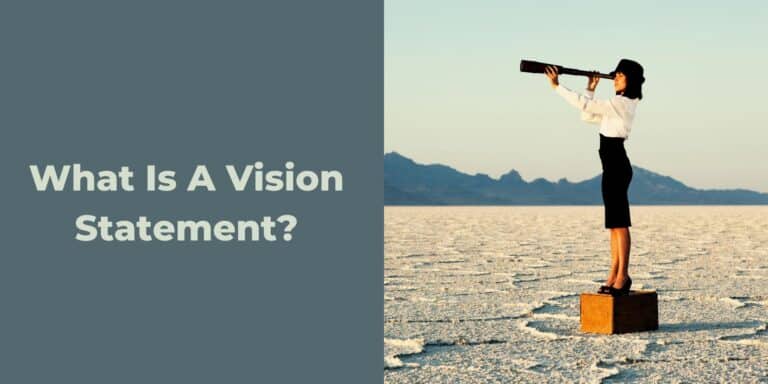7 Steps Your Small Business Should Take Before Hiring That New Employee
Estimated reading time: 7 minutes
When a small business is formed, it is often difficult to imagine the time when there is a need to hire employees.
When that day comes, it is essential to understand what needs to be done to hire a new employee.
There are several steps that need to be considered before entering into an employment arrangement.
Hiring someone is a big step and should be considered carefully.
Following are steps an employer should consider before hiring a new employee.
1. Articulate the Need
The first step is to articulate the need for a new hire. This should be done through the strategic planning process to ensure the new hire supports organizational objectives.
Write an employee job description that supports departmental or organizational goals.
The job description should accurately reflect specific job duties, responsibilities, and performance expectations.
Employee goals should be outlined within the job description so the new employee has a good understanding of what is expected of them and how it will affect their performance appraisal.
2. Identify Job Candidates
Finding the right person to fill a specific job can be like looking for a needle in a haystack. So what to do? There are many ways to get the word out and find the right person.
Word of mouth – get the word out and ask around if anyone knows someone with the skill set you’re looking for.
Social media – use your social networking tools to help with this. LinkedIn, Twitter, and Facebook are all good resources to help find job candidates.
Online recruitment sites – such as Indeed, Monster, CareerBuilder, Jobs.com, etc.
Old-fashioned newspaper ads – this is a dated way to find job candidates but there is a certain demographic that still go to the newspaper to look for jobs.
Be specific with your advertising on what your needs are and what skill set you are looking for.
For example, if you need someone who is proficient with Microsoft Office, specify that. Or, if you’re looking for an accountant and require the level of expertise that a CPA brings, make sure that is a job requirement.
3. Identify Candidates
Once you have all the applicants, review the applications, and look for:
How is the information presented – Is the resume professional-looking, are there typos, and how is the information organized? Obviously, you would look at this very differently if you are looking for someone to help with facilities as compared to hiring a CPA.
What is their work history – Where has the person worked, and what kinds of jobs have they had in what kinds of industries? For example, if you are a small dry cleaner and you find someone who has worked the service desk at a department store, they may have applicable experience.
What are their accomplishments in prior positions – Look for quantifiable accomplishments, i.e., the Candidate developed an Excel document to track and report on quarterly customer comment cards or the candidate developed a budgeting process for ten-plus departments.

What is the length of employment at other positions – You want to see if there is a pattern with someone changing jobs every few years. This is sometimes an indication of employment instability.
What is their educational background – Look for relevant education. For example, secretarial training would be important for a high-level administrative person or a master’s degree might be important for a CPA.
What continuing education have they had – What kinds of continuing education classes have been taken and were they taken to develop new skills or to maintain certification?
What professional organizations do they belong to (for upper-level employees) – How involved is someone with professional organizations?
There are different schools of thought on this but I personally am of the opinion that the more involved someone is with a professional organization, the more they are exposed to diverse ideas and practices that can bring benefit back to the organization.
Do they have outside interests – While many don’t see much value in this, I personally think you can learn a lot about someone’s character based on what they do outside the office.
For example, if someone volunteers at a hospital or homeless shelter, they show warmth to people.
4. Interviewing
Interviewing is a tricky thing, but it is a skill that can be developed.
Take some time to create a list of questions you want to ask the candidate.
When you interview someone keep in mind that they are looking for a job for some reason. You should try to figure out why.
Some things to look for when interviewing someone:
- Does the candidate make good eye contact?
- How articulate is the person?
- Allow the person to do the majority of the talking, just prompt them with questions, and then probe their answers.
You can learn a lot about someone by just letting them talk.
5. Verify Their Information
Once you identify the person you think would be the best fit, it is critical that some final checks are done before making a job offer.
I can’t emphasize enough the importance of doing background checks, reference checks, drug tests, and skill tests.
Remember that just because something is in print doesn’t necessarily mean it’s accurate. If someone says they are proficient in a specific software, make sure you test them.
There is also social style testing that can be helpful. Certain positions match better with some social styles.
This is not a final indicator but can definitely bring insight into how someone naturally works. DISC and Myers Briggs are two I’m familiar with but there are many models out there, and there are HR solutions companies that can help with all of these kinds of screenings.
Don’t let emotion drive your decision because some people are better communicators than others, and some know how to sell themselves – which sometimes means exaggerating real abilities or skills.
6. Job Offer
Ok, you identified the right person and they have passed all the tests. Now is the time to put together a compensation package and job offer.
To do this, you should do some research and use resources to find an appropriate salary range.
Most recruitment websites and many other websites, like Payscale.com, can give you salary ranges by location, experience, and job title.
This is a good starting point.
As a rule of thumb, you should never hire anyone above the midpoint, and if they have no experience, they should definitely start at the bottom of the range.
The goal is to offer fair compensation that you can afford.
Once the salary range is figured out, look at other benefits you offer and put together a package showing them total compensation, including health, dental, and retirement benefits, and what it is costing the company for their entire benefits package.
This gives the candidate the total cost that the organization will be paying to hire them.
Never discuss salary without including a discussion of other benefits. If they talk about prior salaries as a comparison, always ask what benefits came with that salary and do a comparison.
Remember, they are trying to get the most out of you, and you are trying to get them for the lowest possible cost, so use this opportunity to practice your negotiation skills.
7. Prepare for the New Employee
The candidate has accepted the offer, and you have a start date. Now you need to figure out where they will sit and what kind of equipment they will need, i.e., computer, phone, supplies, desk, file cabinet.
Have a workstation set up as soon as they get there so they feel welcomed.
New employee orientation is the final critical step to getting the employee acclimated to the new environment. Helping them transition is important. Some things they may need to know are:
- When is payday (believe it or not, I started a job once and they “forgot” to put me on the payroll. I was there three weeks and finally I asked when is payday?)
- How do they account for their time – timecards, electronic, etc?
- What are the employee policies?
- How do they use other office equipment, i.e. copy machine?
- How long is the lunch break?
- What is the culture like? – for example, casual as compared to formal.
- Do people go out or eat in for lunch?
- What is the dress code?
- What is the computer login information?
- What industry-specific software needs to be learned?
- Who is their supervisor?
- What is their job description?
- What are job expectations, goals, etc.?
Some of this seems like common sense but you’d be surprised at how much more welcoming it is for someone when their questions are answered before they need to be asked.
The more time you spend upfront, the less time you’ll spend later, so take the time and invest in your new employee.
Finally, managing the new employee’s performance and coaching the new employee is the last critical step in the hiring and employment process. Helping to guide the employee is a leader and manager’s responsibility and will help foster a healthy working relationship.






